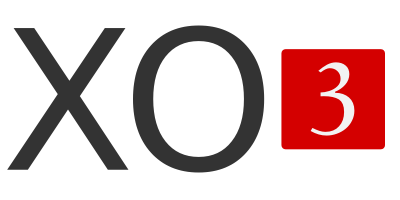New major release for Xen Orchestra
Hi everyone! After 6 months of hard work, more than 500 new commits (!), one LinuxCon, one FOSDEM, around 32000 visitors here, we are proud to present a new version of Xen Orchestra (release 3, codename "Clarinet"). Let's see what we have here!

New features and cycle for 3.x branch
Does it mean we found our release rate? (major version each semester). Well, hard to say, but this 3.x branch will be able to deal with a lot of new things before a new 4.x. Let's recap what's really new in our release:
- new design (it seems pretty obvious :p ), single page app
- everything is dynamic and auto-refreshed: everything happening on your server is immediately visible in every browser connected
- auto-reconnect interface when you lost connection to xo-server, without manual refreshing
- global statistics in main view
- VM map, VDI map and other useful indicators in their respective views
- brand new backend
- almost every pieces of Xen information displayed in live on XO (from VM to task, snapshots, pools, IP, etc.)
- a lot of things are editable (main objects name, description and RAM/CPU for VM etc.)
- bulk actions on VM (stop, start, reboot, hard reboot/restart, deletion with associated VDI, migration)
- event "current operation" on a VM ("orange dot" give you the information about what's happening right now to your VM)
- nice notification messages are displayed
- modal windows for critical operations (remove etc.)
- VM deletion with their associated VDI. Combined with bulk action, you can really work faster
- live search bar, filtering on anything (name, IP, whatever)
- VM creation (with ISO or in HTTP mode, both works)
- VM console with ISO mounting dialog + "Ctrl Alt Del" keys (I know how it's important for Windows users)
- adding XAPI hosts
- adding users with basic rights
- ... and much more!
Conclusion: you'll never need to manually refresh XO in your browser.
Genesis of 3.x
Here the small story of this release, if you are impatient about downloading, you can directly go to the next paragraph.
- September: one month for designing the main view and get a rough idea of the rest. That's here we got the opportunity to redesign everything without thinking to anything else: only sketching with a pen! Plus we got a big event in New-Orleans and we also fix bugs from our current release.
- October: we started to implement our drawings to real HTML views, with mockup data. This step was very important to calibrate our first thoughts previously done on paper. It's long process with a lot of trials and errors, new ideas/features and how to put them without losing usability. We also added features to the existing release, like an event system for better scalability.
- November: get a nice static interface is one thing, create all the dynamic views are another. But we started it with a whole new framework: AngularJS instead of BackBone. This month gave us the opportunity to understand those new concepts. We started simply (login forms etc.) by adding complexity one step at a time. In parallel, we started to work on a better back end. A new data model, more flexible was started. At this stage, we managed to see a lot of informations from our data, but without any interaction possible so far. Noticeable breakthrough: a nice and clean search bar and its associated "flat" view. We also made some interesting benchmarks between PV and PVHVM.
- December: well, our new design needed to be connected properly to the new data model. And as we have a flow of real data for testing, we also see a lot of new things we didn't in the first place. Constant adaptation and evolution, Darwin will be proud ;) New features, new ideas, new problems, new solutions. But we made a lot of progresses, and it started to be usable for interactions: starting, pause, restart VM worked like a charm.
- January: we started to implement objects modifications, first in the UI then in the backend. But we also have duplication and useless work involved to follow those new features. We choose to take the time to write some "helpers" and give again more flexibility to our back end, by an useful refactoring. We finally reach a point where maintenance is really easy now, as adding new features! (we added "bulk" action in few days only)
- February: it started by a great FOSDEM in Belgium, and we were able to show to people how Xen Orchestra works with a real demo on the Xen booth. We also worked a lot to create VM directly in the interface: a nice challenge! And other good features were literally released each day: that's a good and firm sign that our model is strong now. We can release a new version and easily add features during next months.
Download
Try it here or subscribe here.
Commercial support
If you want professional support, it's now possible and included in our appliance: get more information here.
If you think our knowledge of Xen can help you in any way, contact us. If you just want to support us by getting... support (meh!), go on too!

What's next?
What's next relies on you.
By taking support, you'll help us to finance this project, and by this allowing us to continue to develop new features quicker. Our ideal objective is to dedicate all our development resources on Xen Orchestra and its services. Sponsoring is also another way to help this project. You can also report bugs or give us ideas on the community forum.
